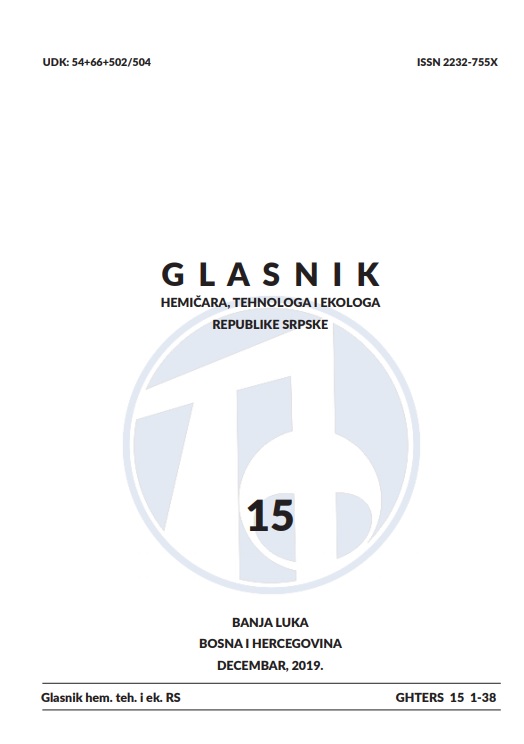Hydrolysis of sunflower seed meal lignocellulosic fraction by free and immobilized cellulases
DOI:
https://doi.org/10.7251/GHTE1915017CAbstract
Lignocellulosic biomass is widely abundant in nature and recognized as
potential renewable energy source. Its efficient transformation into bio-based
fuels is enabled only after adequate pretreatment, followed by enzymatic
sacharification and microbial fermentation. Hereby we present application of two
cellulase preparations – from Aspergillus niger and Trichoderma reesei (Celluclast®)
in treating sunflower seed meal lignocellulosic fraction (SSMLF). Temperature and
pH optimums of two enzymes were determined – 52 °C and pH4.8 for A. niger
cellulase and 55 °C and pH4.5 for Celluclast®. At optimized conditions, milled
SSMLF was hydrolyzed by both biocatalysts. With A. niger cellulase higher initial
reaction rates were accomplished and yield of 70 mM glucose equivalent was
obtained with 6 % (w/v) of enzyme after 6 hours. On the other hand, application
of Celluclast® led to lower initial reaction rates and yielded 25 mM of glucose
equivalent with 10 % (v/v) of enzyme. To ensure cost-effective application of
A. niger cellulase, the possibility of its immobilization on different supports was
investigated. By using porous methacrylate-based carrier with C6 spacer arm and
primary amino groups – LifetechTM ECR8409, preparation with highest activity was
produced. This preparation was successfully applied in saccharification of SSMLF
and showed unchanged catalytic efficiency comparing to free enzyme.
References
lignocellulose,
cellulase,
immobilization
